
The Majestic Mount St. Helens: A Volcanic Wonder
Explore the wonders of Mount St. Helens National Volcanic Monument, where nature's power and resilience create a captivating landscape in Washington, United States.
Mount St. Helens National Volcanic Monument is a captivating natural attraction located in Washington, United States. This awe-inspiring site is famous for its dramatic volcanic history, particularly the cataclysmic eruption in 1980 that reshaped the landscape. Today, the monument stands as both a reminder of nature's power and a testament to its resilience. Visitors to Mount St. Helens can explore a variety of unique geological features, from the massive crater left by the eruption to the thriving ecosystems that have emerged in its aftermath. The Johnston Ridge Observatory offers spectacular views of the crater and informative exhibits about the volcano's history. For those seeking adventure, numerous hiking trails of varying difficulty levels lead through lush forests and up to breathtaking viewpoints. The monument is also a haven for wildlife enthusiasts. The diverse habitats around Mount St. Helens provide opportunities to observe elk, deer, birds, and other fauna in their natural environment. Additionally, the visitor centers offer educational programs and guided tours that enhance the understanding of the area's volcanic activity and ecological recovery. Whether you're a nature lover, a geology enthusiast, or simply looking for a unique experience, Mount St. Helens National Volcanic Monument is a must-visit destination.
Local tips in Mount St. Helens National Volcanic Monument
- Visit the Johnston Ridge Observatory for the best views and educational exhibits.
- Wear sturdy shoes and bring water if you plan to hike the trails.
- Check the weather forecast before your visit, as conditions can change rapidly.
- Take advantage of guided tours to learn more about the volcano's history and ecological recovery.
- Visit in the early morning or late afternoon to avoid crowds and enjoy the best lighting for photography.
The Majestic Mount St. Helens: A Volcanic Wonder
Mount St. Helens National Volcanic Monument is a captivating natural attraction located in Washington, United States. This awe-inspiring site is famous for its dramatic volcanic history, particularly the cataclysmic eruption in 1980 that reshaped the landscape. Today, the monument stands as both a reminder of nature's power and a testament to its resilience. Visitors to Mount St. Helens can explore a variety of unique geological features, from the massive crater left by the eruption to the thriving ecosystems that have emerged in its aftermath. The Johnston Ridge Observatory offers spectacular views of the crater and informative exhibits about the volcano's history. For those seeking adventure, numerous hiking trails of varying difficulty levels lead through lush forests and up to breathtaking viewpoints. The monument is also a haven for wildlife enthusiasts. The diverse habitats around Mount St. Helens provide opportunities to observe elk, deer, birds, and other fauna in their natural environment. Additionally, the visitor centers offer educational programs and guided tours that enhance the understanding of the area's volcanic activity and ecological recovery. Whether you're a nature lover, a geology enthusiast, or simply looking for a unique experience, Mount St. Helens National Volcanic Monument is a must-visit destination.
When is the best time to go to Mount St. Helens National Volcanic Monument?
Iconic landmarks you can’t miss
Mount St. Helens National Volcanic Monument Headquarters
Explore the wonders of Mount St. Helens National Volcanic Monument Headquarters, a breathtaking site of nature's resilience in Washington State.

Mount Saint Helens National Volcanic Monument
Discover the natural beauty and geological wonder of Mount Saint Helens National Volcanic Monument in Washington, a must-visit destination for nature enthusiasts.
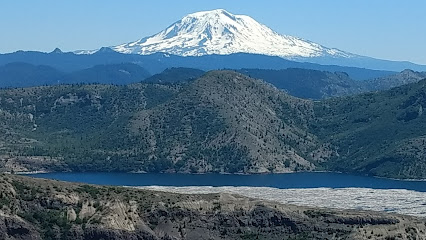
Mt. Saint Helens
Explore Mt. Saint Helens, an archaeological marvel showcasing the power of nature and the resilience of the environment amidst breathtaking landscapes.

Mount St Helen Sign
Explore the Mount St. Helens Sign, a historical landmark marking the site of one of nature's most powerful volcanic eruptions in Washington State.
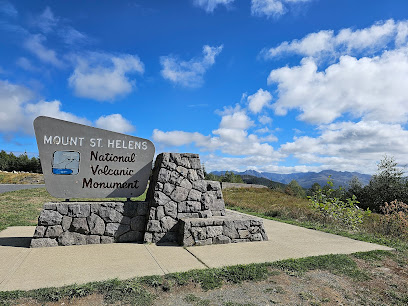
Unmissable attractions to see
Johnston Ridge Observatory
Discover breathtaking views and rich volcanic history at Johnston Ridge Observatory, a premier destination for nature lovers in Washington State.

Mt St Helens
Experience the awe-inspiring beauty and power of Mt. St. Helens, a testament to nature's resilience and volcanic majesty in Washington State.

Ape Cave Interpretive Site
Explore the breathtaking Ape Cave Interpretive Site, a natural wonder in Washington with stunning lava formations and scenic hiking trails.

Windy Ridge Viewpoint
Discover the stunning vistas of Mount St. Helens at Windy Ridge Viewpoint, a scenic spot that promises awe-inspiring views and unforgettable hiking experiences.

Ape Cave
Discover the thrilling underground world of Ape Cave, one of the longest lava tubes in the U.S., nestled in the stunning landscapes of Washington State.

Elk Rock Viewpoint
Experience breathtaking views of Mount St. Helens and the surrounding wilderness at Elk Rock Viewpoint, a must-visit destination for nature lovers.

Lava Canyon Trailhead
Discover the breathtaking beauty of Lava Canyon Trailhead, a premier hiking destination near Mount St. Helens, perfect for adventure seekers and nature lovers.

Observation Site: Mt. Rainier-Goat Rocks
Experience the stunning panoramic views of Mt. Rainier and Goat Rocks Wilderness at this accessible vista point along US Route 12.

Loowit Viewpoint
Discover the stunning vistas of Mount St. Helens at Loowit Viewpoint, a must-visit destination for nature enthusiasts and photographers in Washington.

Trail of Two Forests Interpretive Site
Explore the Trail of Two Forests Interpretive Site for a unique hiking experience that reveals the ecological wonders and recovery after the Mount St. Helens eruption.

Castle Lake Viewpoint
Experience the stunning vistas of Mount St. Helens at Castle Lake Viewpoint, a must-visit destination for nature lovers and photographers alike.
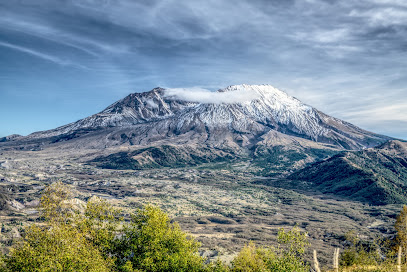
Guler Ice Caves
Discover the natural wonder of Guler Ice Caves in Washington, where stunning ice formations and breathtaking landscapes create an unforgettable hiking experience.

Sno-Park: Marble Mountain
Discover the beauty of Sno-Park: Marble Mountain, a premier hiking destination in Washington with stunning views of Mount St. Helens and diverse landscapes.

Hoffstadt Creek Bridge
Explore Hoffstadt Creek Bridge, a stunning architectural gem offering breathtaking views and a connection to Washington's natural beauty.

Coldwater Lake
Experience the tranquility of Coldwater Lake in Washington, a perfect getaway for nature lovers and adventure seekers alike, surrounded by stunning landscapes.
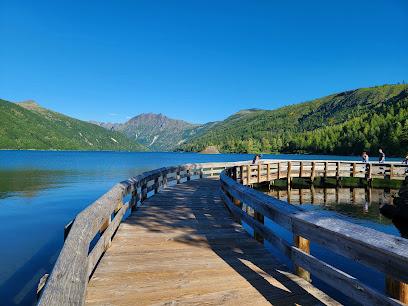
Essential places to dine
Johnston Ridge Observatory
Experience breathtaking views and learn about volcanic history at Johnston Ridge Observatory near Mount St. Helens.

Mount St. Helens National Volcanic Monument
Explore Mount St. Helens National Volcanic Monument: A breathtaking blend of natural beauty and volcanic history in Washington State.

Cruiser’s Pizza
Discover Cruiser’s Pizza in Packwood - where delicious handcrafted pizzas meet warm hospitality amidst stunning natural beauty.
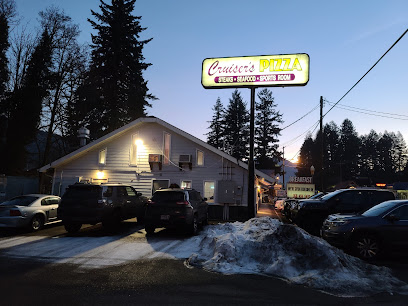
Blue Spruce Saloon And Diner
Experience local flavors at Blue Spruce Saloon & Diner in Packwood – where hearty meals meet friendly service amidst stunning natural beauty.
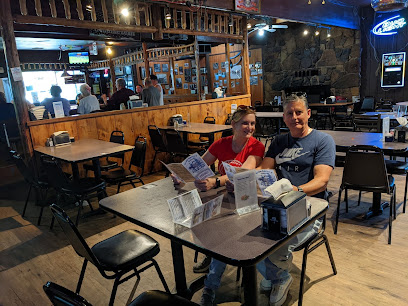
Mt. Rainier Railroad Dining Co.
Discover delicious American cuisine at Mt. Rainier Railroad Dining Co., where scenic views meet delightful flavors near Mount Rainier.

Lone Fir Resort
Experience the beauty and adventure at Lone Fir Resort in Cougar, WA – your perfect escape into nature's embrace.

Cliff Droppers
Discover mouthwatering burgers at Cliff Droppers in Packwood, WA – where flavor meets friendly service amidst stunning landscapes.

Cougar Bar & Grill
Experience delicious grilled delights at Cougar Bar & Grill, where local flavors meet stunning natural beauty in Washington.

Tall Timber Restaurant Lounge
Discover the flavors of America at Tall Timber Restaurant Lounge in Randle – your perfect retreat for delicious food and cozy accommodations.
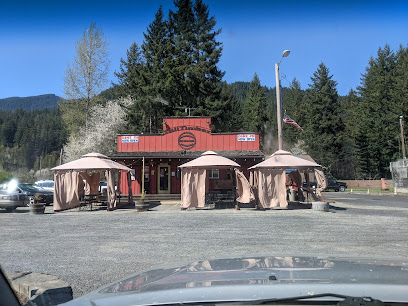
Lone Fir Cafe
Experience delightful dining at Lone Fir Cafe near Mount St. Helens with family-friendly meals and stunning river views.
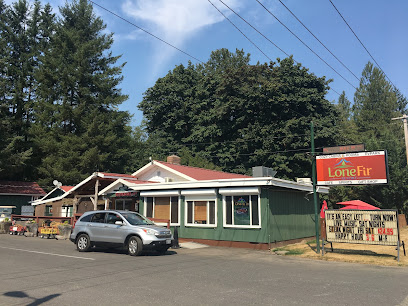
Mount Saint Helens National Volcanic Monument
Discover breathtaking views and unique geological wonders at Mount Saint Helens National Volcanic Monument in Washington State.
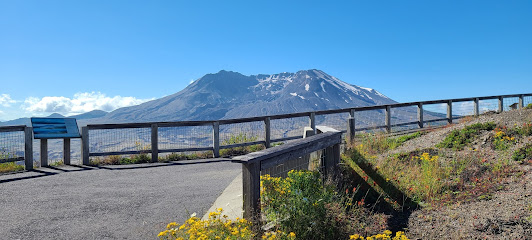
Big Bottom Roadhouse
Experience the best grilled delights at Big Bottom Roadhouse in Randle, WA - where great food meets warm hospitality.

Markets, malls and hidden boutiques
Mount St. Helens National Volcanic Monument
Explore the wonders of Mount St. Helens National Volcanic Monument, a stunning national reserve showcasing nature's power and beauty in Washington.
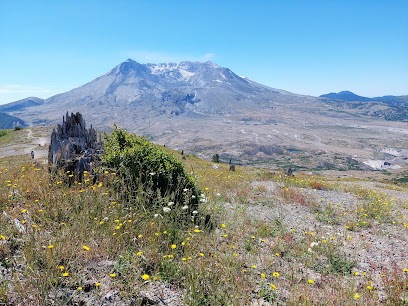
Mt St Helens
Discover the breathtaking beauty and geological significance of Mt. St. Helens, an iconic active volcano in Washington state.

Mt St Helens Forest Learning Center
Explore the Mt. St. Helens Forest Learning Center: Uncover the science, beauty, and recovery of one of nature's most iconic landscapes.

Mount St. Helens National Volcanic Monument Headquarters
Explore the breathtaking landscapes and rich geological history of Mount St. Helens National Volcanic Monument Headquarters, a must-visit for nature lovers and adventure seekers.

Mount Saint Helens National Volcanic Monument
Experience the breathtaking natural beauty and geological significance of Mount Saint Helens National Volcanic Monument, a must-visit destination in Washington.

Mt. Saint Helens
Explore the breathtaking landscapes and geological wonders of Mt. Saint Helens, a testament to nature's power and resilience in Washington.

Essential bars & hidden hideouts
Johnston Ridge Observatory
Discover the awe-inspiring views and rich volcanic history at Johnston Ridge Observatory, a premier observation deck in Washington State.

Mount St. Helens National Volcanic Monument
Discover the awe-inspiring beauty and geological significance of Mount St. Helens National Volcanic Monument, a true gem in Washington's natural landscape.
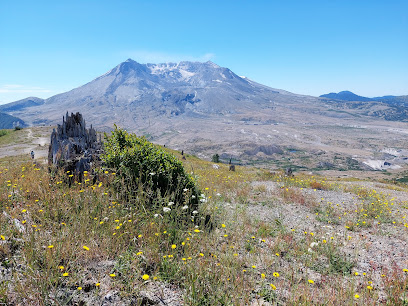
Cougar Bar & Grill
Experience the rustic charm and delicious grilled flavors at Cougar Bar & Grill, your cozy dining destination in the heart of Washington's natural beauty.

Mount Saint Helens National Volcanic Monument
Discover the breathtaking landscapes and rich geological history at Mount Saint Helens National Volcanic Monument, a nature preserve in Washington.

Mount St. Helens National Volcanic Monument Headquarters
Experience the breathtaking beauty and geological wonders at Mount St. Helens National Volcanic Monument Headquarters, a top destination for nature lovers.

Mount St Helen's View Point
Discover the majestic Mount St. Helens View Point, a cultural landmark offering breathtaking vistas and a glimpse into nature's incredible recovery.

Mount St Helen Sign
Discover the historical significance and natural beauty at the iconic Mount St. Helen Sign, a testament to nature's power and resilience.
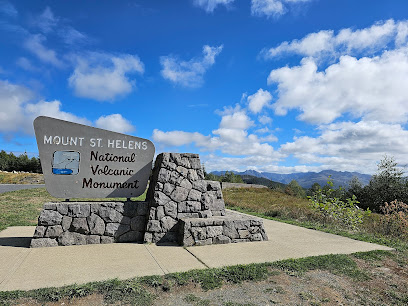
Local Phrases about Mount St. Helens National Volcanic Monument
-
- HelloHalo
[hah-loh] - GoodbyeHwyl fawr
[hweel vaur] - YesYdw
[uh-doo] - NoNa
[nah] - Please/You're welcomeOs gwelwch yn dda
[oss goo-el-ookh un tha] - Thank youDiolch
[dee-ol-kh] - Excuse me/SorryYmddiheuriad
[um-thee-hayr-ee-ad] - How are you?Sut wyt ti?
[sit wit tee] - Fine. And you?Da. A ti?
[dah ah tee] - Do you speak English?Ydych chi'n siarad Saesneg?
[ud-ikh khee-un shar-ad saiz-neg] - I don't understandDw i ddim yn deall
[doo ee ddim un deh-al]
- HelloHalo
-
- I'd like to see the menu, pleaseHoffwn weld y fwydlen, os gwelwch yn dda
[hoff-oon weld uh foo-id-len oss goo-el-ookh un tha] - I don't eat meatDw i ddim yn bwyta cig
[doo ee ddim un boo-ee-ta keeg] - Cheers!Iechyd da!
[yay-kheed dah] - I would like to pay, pleaseHoffwn dalu, os gwelwch yn dda
[hoff-oon dah-lee oss goo-el-ookh un tha]
- I'd like to see the menu, pleaseHoffwn weld y fwydlen, os gwelwch yn dda
-
- Help!Help!
[help] - Go away!Mynd i ffwrdd!
[mend ee furth] - Call the Police!Galwch yr Heddlu!
[gal-ookh ur heth-lee] - Call a doctor!Galwch feddyg!
[gal-ookh meh-deeg] - I'm lostRwy'n colli
[roo-un koh-lee] - I'm illRwy'n sâl
[roo-un sahl]
- Help!Help!
-
- I'd like to buy...Hoffwn brynu...
[hoff-oon bree-ni...] - I'm just lookingDim ond edrych
[deem ond ed-ruch] - How much is it?Sut mae'n costio?
[sit myn cost-ee-oh] - That's too expensiveMae hynny'n rhy ddrud
[my huth-nee-un rhi threed] - Can you lower the price?Allwch chi ostwng y pris?
[al-ookh khee osth-oon-guh prees]
- I'd like to buy...Hoffwn brynu...
-
- What time is it?Beth yw'r amser?
[beth oo-r am-sair] - It's one o'clockMae'n un o'r gloch
[my un or gluh-kh] - Half past (10)Hanner wedi (10)
[han-air wed-ee (10)] - MorningBore
[bore-eh] - AfternoonP'nawn
[p'noun] - EveningNos
[noss] - YesterdayDdoe
[thoy] - TodayHeddiw
[hed-ee-oo] - TomorrowYfory
[uh-vor-ee] - 1Un
[een] - 2Dau
[dye] - 3Tri
[tree] - 4Pedwar
[ped-war] - 5Pump
[pimp] - 6Chwech
[kh-wekh] - 7Saith
[sigh-th] - 8Wyth
[ooth] - 9Naw
[now] - 10Deg
[deg]
- What time is it?Beth yw'r amser?
-
- Where's a/the...?Ble mae...?
[bleh my...] - What's the address?Beth yw'r cyfeiriad?
[beth oo-r kuh-veyr-yad] - Can you show me (on the map)?Allwch chi ddangos i mi (ar y map)?
[al-ookh khee than-goss ee mee (ar uh map)] - When's the next (bus)?Pryd fydd y bws nesaf?
[preed fid uh boos neh-sav] - A ticket (to ....)Tocyn (i ....)
[tock-in (ee)]
- Where's a/the...?Ble mae...?
History of Mount St. Helens National Volcanic Monument
-
Mount St. Helens, located in the Cascade Range of Washington, is a stratovolcano formed over millions of years by a series of volcanic eruptions. The mountain's history can be traced back to the late Pleistocene epoch, about 40,000 years ago. The region's subduction zone activity, where the Juan de Fuca Plate slides beneath the North American Plate, has been a significant driving force behind the volcanic activity in the area.
-
For centuries, Mount St. Helens has held cultural significance for the Native American tribes of the Pacific Northwest, particularly the Cowlitz and Klickitat tribes. The mountain was known as 'Loo-Wit' to these tribes and was deeply embedded in their legends and oral histories. They revered the volcano as a sacred site and believed it to be the home of a powerful spirit.
-
The cataclysmic eruption on May 18, 1980, is the most significant event in Mount St. Helens' recent history. The eruption was preceded by a two-month series of earthquakes and steam-venting episodes, culminating in a massive landslide and a powerful lateral blast. The eruption released an enormous plume of ash that reached 15 miles into the atmosphere and devastated 230 square miles of forest. Fifty-seven people lost their lives, and the event reshaped the surrounding landscape.
-
In response to the 1980 eruption, President Ronald Reagan established the Mount St. Helens National Volcanic Monument on August 27, 1982. The 110,000-acre monument was created to preserve the volcano and its surrounding environment for scientific research, education, and recreation. The area has since become a living laboratory for studying ecological recovery and volcanic processes.
-
In the decades following the 1980 eruption, Mount St. Helens has become a vital site for ecological research. Scientists have observed the gradual return of plant and animal life to the area, providing valuable insights into the processes of ecological succession and resilience. The region has also become a hub for volcanology research, attracting experts from around the world to study its ongoing volcanic activity.
-
Today, Mount St. Helens National Volcanic Monument offers a range of activities for visitors, including hiking, climbing, and educational programs. The Johnston Ridge Observatory provides an up-close view of the volcano's crater and offers exhibits on the 1980 eruption and the area's natural history. The monument's extensive trail system allows visitors to explore the diverse landscapes, from lush forests to barren lava fields, showcasing the remarkable recovery of the region.
Mount St. Helens National Volcanic Monument Essentials
-
Mount St. Helens National Volcanic Monument is located in southwestern Washington State, approximately 96 miles south of Seattle and 50 miles north of Portland, Oregon. The nearest major airport is Portland International Airport (PDX). From Portland, you can rent a car and drive to the monument via Interstate 5 North, then take Exit 49 toward Castle Rock, and follow State Route 504 East. Alternatively, shuttle services and guided tours are available from both Seattle and Portland.
-
The most convenient way to explore Mount St. Helens National Volcanic Monument is by car. There are several visitor centers and viewpoints accessible via State Route 504, also known as the Spirit Lake Memorial Highway. Public transportation options are limited, so renting a car is highly recommended. For those interested in cycling, there are bike-friendly areas, but be prepared for challenging terrain and varying weather conditions.
-
The official currency is the United States Dollar (USD). Credit and debit cards are widely accepted at visitor centers, gift shops, and restaurants within the monument. However, it is advisable to carry some cash, as smaller vendors or remote areas may not accept cards. ATMs are available in nearby towns like Castle Rock and Longview, so plan to withdraw cash before heading into the more remote areas of the monument.
-
Mount St. Helens National Volcanic Monument is generally safe for visitors, but it is essential to be aware of the natural hazards associated with volcanic landscapes. Stay on marked trails, follow all posted signs, and be mindful of unstable ground and potential rockfalls. While the surrounding areas do not have high crime rates targeting tourists, it is always best to stay vigilant and secure your belongings. Avoid walking alone in isolated areas, especially at night.
-
In case of an emergency, dial 911 for immediate assistance. The nearest hospitals are located in Longview and Centralia, both about an hour's drive from the monument. It is advisable to have travel insurance that covers medical emergencies and evacuation. For minor injuries or health issues, first aid stations are available at some visitor centers. Always carry a basic first aid kit, sufficient water, and snacks, especially if you plan on hiking or exploring remote areas.
-
Fashion: Do wear comfortable and weather-appropriate clothing, including sturdy hiking boots. Don't wear flip-flops or open-toed shoes on trails. Religion: While there are no specific religious customs to observe, always show respect for the natural environment. Public Transport: Do plan your transportation in advance, as public transport options are limited. Don't rely on public transport for last-minute trips. Greetings: Do greet park rangers and fellow hikers with a friendly hello. Don't ignore safety briefings and guidelines. Eating & Drinking: Do pack out all trash and food waste. Don't feed wildlife or leave food unattended, as it can attract animals.
-
To experience Mount St. Helens like a local, visit the Johnston Ridge Observatory for stunning views and educational exhibits about the 1980 eruption. Take a guided tour to learn more about the area's geology and history. For a unique experience, hike the Ape Cave Lava Tube, one of the longest lava tubes in North America. Don't miss the Windy Ridge Viewpoint for panoramic views of the volcano and the surrounding landscape. Lastly, consider visiting in the shoulder seasons (spring and fall) to avoid the summer crowds and enjoy cooler weather.
Nearby Cities to Mount St. Helens National Volcanic Monument
-
Things To Do in The Dalles
-
Things To Do in Tacoma
-
Things To Do in Auburn
-
Things To Do in Federal Way
-
Things To Do in Kent
-
Things To Do in Renton
-
Things To Do in Yakima
-
Things To Do in Bremerton
-
Things To Do in Seattle
-
Things To Do in Bellevue
-
Things To Do in Redmond
-
Things To Do in Kirkland
-
Things To Do in Lynnwood
-
Things To Do in Everett
-
Things To Do in Marysville











